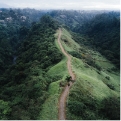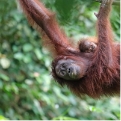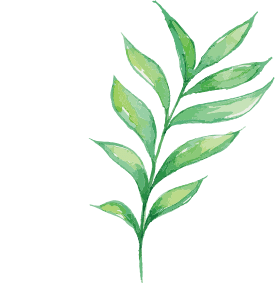Main Studies
Conservation does not take place in situ or ex situ, but unfolds in various messy, unpredictable ways. Rather than treating orangutan conservation as a single ‘thing’ that remains the same as it traverses different contexts, our project asks how it is (re)produced and reworked across a fragmented planetary landscape.
Our research involves a comparative, multi-sited ethnographic investigation structured around four interlinked studies, each of which is carried out by a researcher at a key node of orangutan conservation. These are:

1. Visualizing orangutans (Liana Chua): A multi-sited study of how orangutans are visualized in different conservation contexts, the circuits across which such visualizations travel, and the relations, politics and imaginaries to which they give rise. This study draws scientific visualizations, photography and art into a single frame of analysis and asks how these practices and technologies intersect and co-produce ideas and realities within orangutan conservation.

2. Community conservation (Viola Schreer): An ethnography of a newly-established ‘community conservation’ project in central Kalimantan (Borneo) and the multiple ways in which anthropogenic environmental change (e.g. forest fires and the haze), as well as notions of planetary crisis, extinction, and indeed conservation itself are experienced, conceptualized and negotiated in this complex space.

3. Orangutan adoption (Hannah Fair): An ethnography of virtual orangutan ‘adoption’ schemes run mainly by charities in the global North, through which rescue and rehabilitation centres in Borneo and Sumatra obtain financial backing and raise awareness about the plight of orangutan. This study will examine how notions of kinship, relatedness, intimacy and care are negotiated in this field, and ask how they shape and are shaped by mounting public awareness about extinction, environmental crisis, interspecies ethics and ‘the Anthropocene’.

4. Orangutan rescue (Anna Stępień): An ethnography of a human-orangutan conflict mitigation and rescue unit in Sumatra that uses the morally and affectively-loaded concept of ‘rescue’ as a lens onto ethical, political and ecological dilemmas in orangutan conservation. This study will ask what ‘saving’ a particular species entails in a socio-cultural setting that is far removed from yet indelibly affected by international discourses about extinction and biodiversity conservation, as well as how ‘rescue’-related practices and ideas are shaped by Anthropocenic phenomena and ideas.
These four studies straddle the main nodes of orangutan conservation today: charities, conservation science initiatives, rescue and rehabilitation centres, and community conservation schemes, all of which are linked by an intricate and sometimes competitive network of collaborations, funding arrangements, organizational structures, publicity initiatives and mobile individuals. Put together, they will enable us to build up a complex picture of how one global conservation nexus ‘ticks’ (or fails to) across geographical, cultural and political boundaries.

